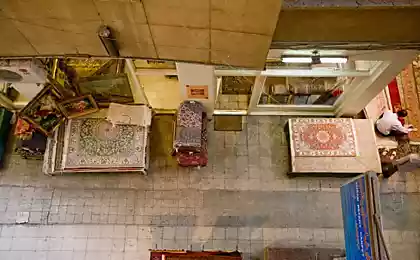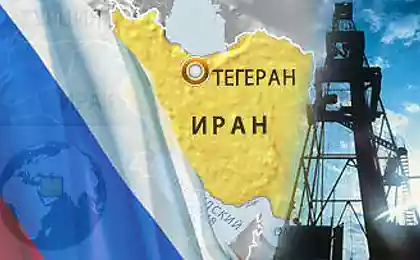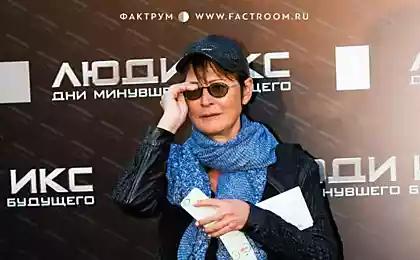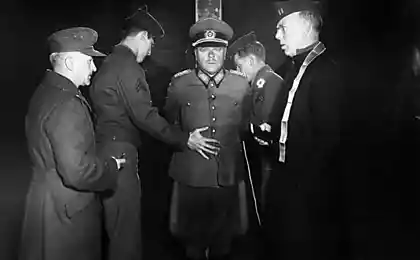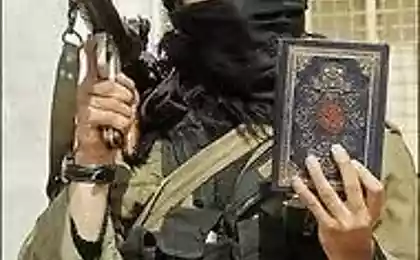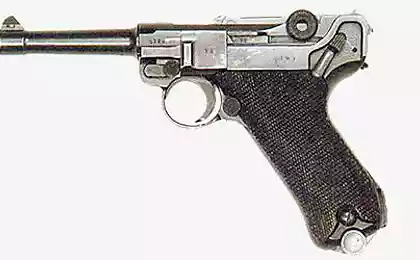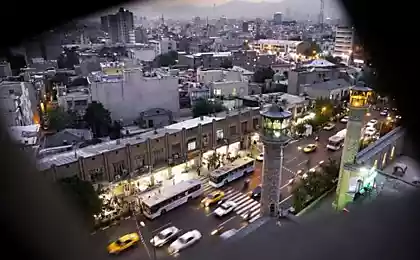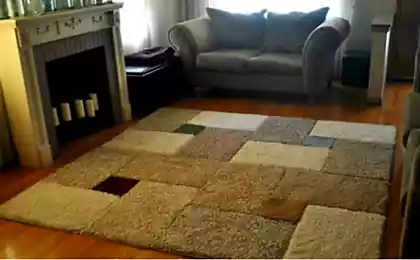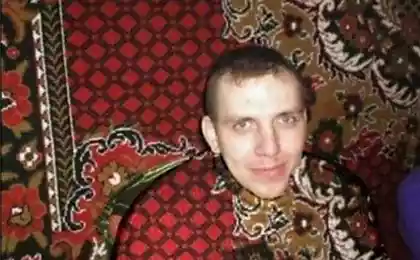1831
Iran - the world leader in the production of carpets (22 photos)
In addition to oil, Iran has three main export product is nuts, caviar and carpets. Iran has been and remains the world leader in the production of carpets. Such centers of carpet weaving as Nain, Isfahan, Tabriz, Gabe, Qom made traditional, but especially in style Iranian carpets. But the carpet is not only export goods in Iranian homes a little furniture, so the carpet - the main decoration and indicator of prosperity in the house. Under the cut story about Carpets mafia and prices.
1. The Iranian carpets are almost always sold under the brand name "Persian". Although Persia long gone, everyone knows that the softest cat is "Persian", the most succulent fruit is "Peaches" and the best carpets "Persian".
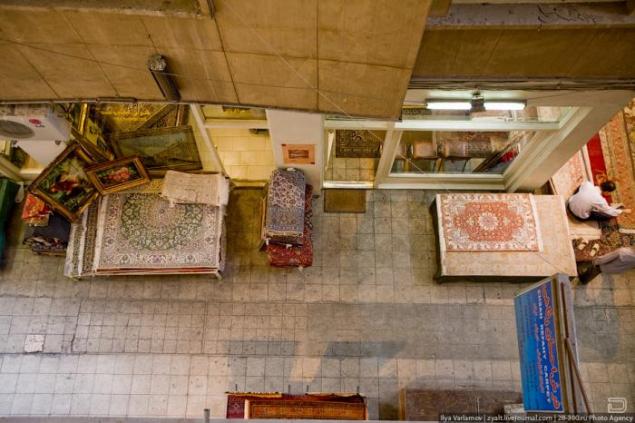
2. This carpet mafia, the most powerful mafia in Iran. In Iran, due to disputes with the United States is nowhere does not accept credit cards. ANYWHERE, you can not pay your credit card anywhere can not withdraw cash, it is written in all the guidebooks in bold. There is only one place where you can get a cash card with the US - a carpet shop. Carpet Baron, a large percentage will your card transaction through a bank in the UAE, he is happy to take the card to pay expensive carpet.

3. Carpet Baron has long been the production of carpets in any way. He places an order with the poor Iranian peasants who are high up in the mountains for years woven carpets, they he pays 500 to $ 1,000 per koverogod (that is, if the carpet do half a year, the fee is 2 times less), and then sells them 5 times more tourists.
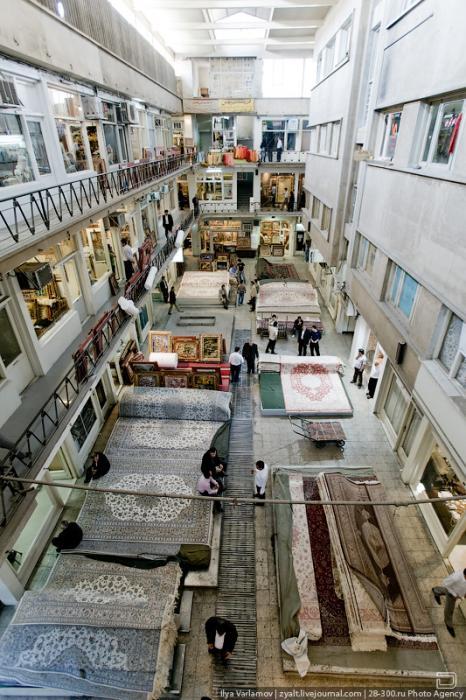
4. If you are logged in to a carpet shop in Esfahan that guidebooks describe as one of the centers of carpet weaving, do not be surprised to discover there is no local production of carpets. Though quirky salesman easily sell you a Chinese rug, like a local.
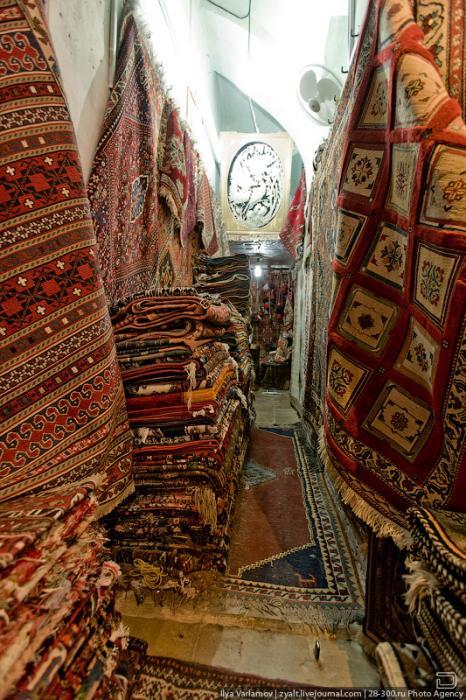
5. It looks like a typical carpet shop, which lure tourists. If you do decide to buy a carpet, it is best to come to the shop itself, as elsewhere, zamanily or "guide", which led you to the store, get a percentage of your transaction, which, of course, you pay.
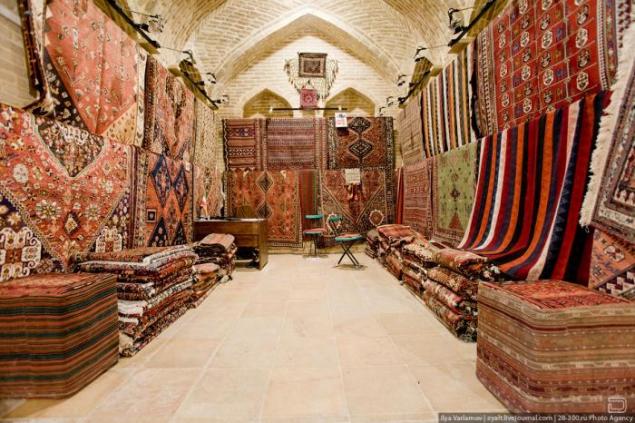
6. The cost of the carpet starts at $ 20 on the Chinese synthetics to tens of thousands of dollars for the great Iranian silk carpet. Wool carpets are domestic production of 100 dollars. Good wool rug can be bought for 300-400 and silk for 3000-5000. The best wool carpet is cut from the neck and stomach of a sheep. It is believed that the wool is characterized best quality and shine.
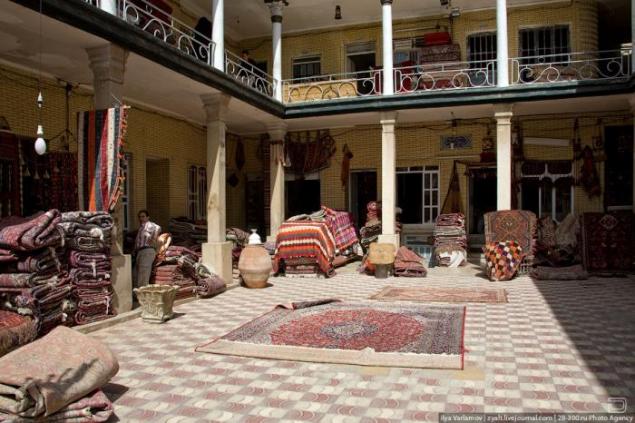
7. Here then try differences Chinese carpet from Iran. If you decide to buy an expensive carpet, it is best to visit to shop and see the range of our stores. Firstly, you will learn a little bit to understand the carpets, and secondly, will be able to decide what you like and do not spend a lot of time in Iran in search.
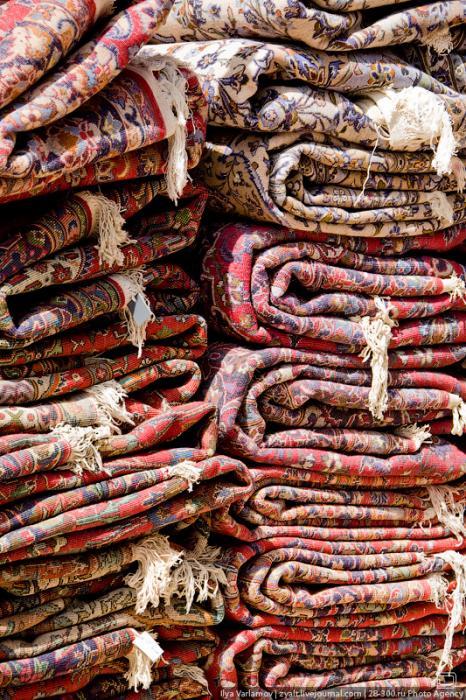
8. Carpet shops are open every day, even when the rest of the market is closed.
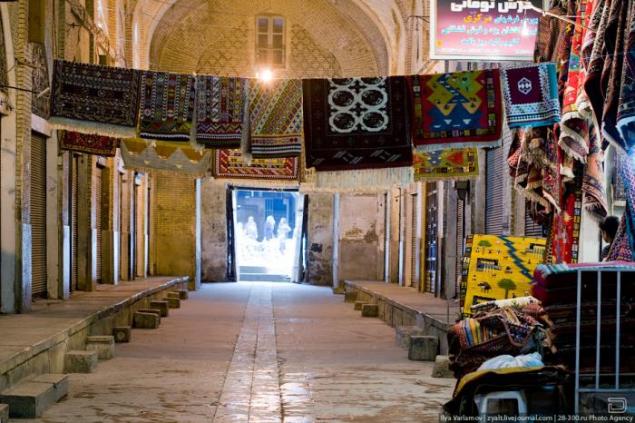
9. Cheap carpets even harvested at night, this is not stealing.
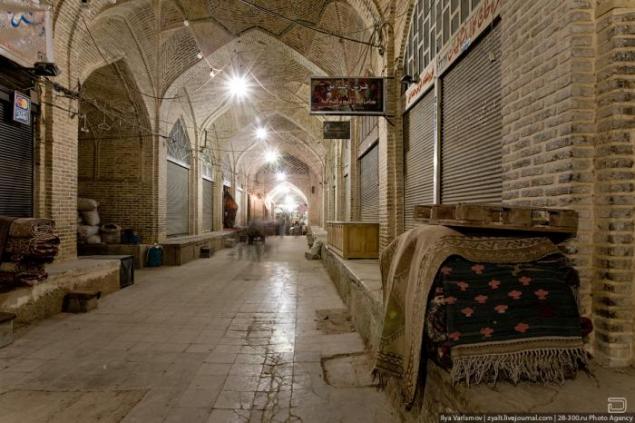
10. Also, the carpets are hand or machine work. Chinese carpets in the main machine knitting, red price it $ 200, of course, does not make sense to carry a carpet from Iran. Shopkeepers repair the goods in the store. Recently in Iran, put into production carpet cleaning, dyeing and spinning machines, beware of imitations! Units should be smooth and orderly arrangement of them. If you look at the seamy side of the carpet handmade pattern and color will be clean. This compares favorably with the carpet carpet machine work, which has blurred the picture.
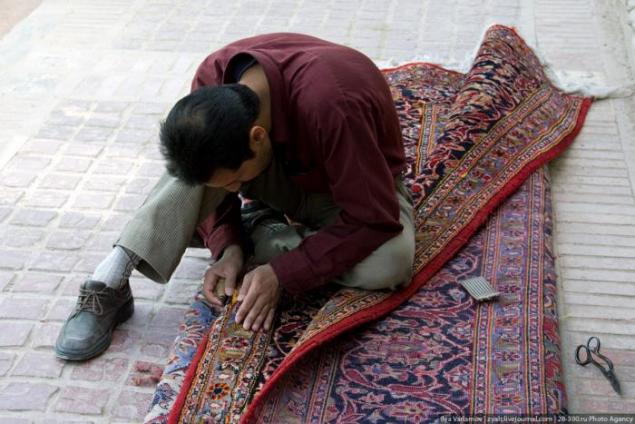
11. Few mend and will be like new! In Iran, there are two methods of carpet: the Turkish and Persian. Turkish rugs are woven by a needle hook. According to the method of Persian knots tied inside by hand. Carpets made by the Turkish method, firmer texture. It depends on how the knots, which is different from the Persian. In Persian carpet smooth surface inside out thanks to a peculiar way of tying knots.
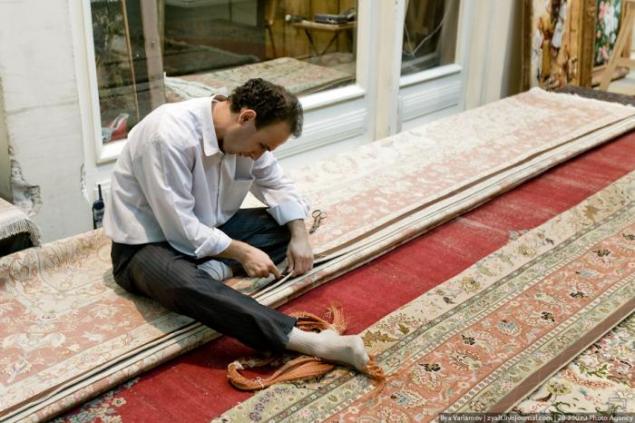
12. In the carpet shops are often kitsch reigns. If earlier the Persian masters boast stunning ornaments, fine work, now it is 99 per cent identical plots stamping stencil. Then I will show a few carpets from the museum, so you can see how everything is bad. The apogee of bad taste are the carpet pattern. This picture perfectly decorate Gypsy house, living room or office Kadyshevo Moscow officials, the rest have to stay away from them.
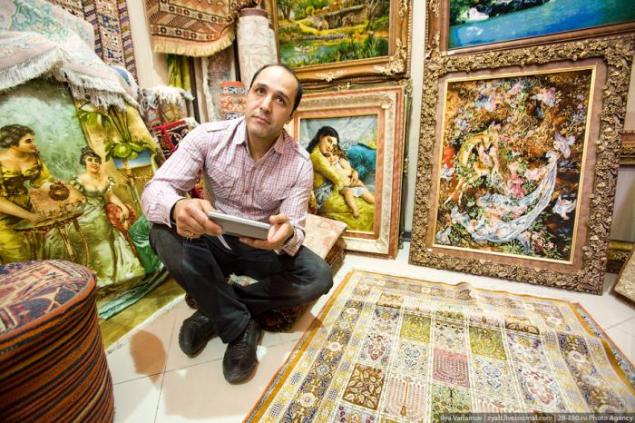
13. In the photo 3 silk carpet. The cheapest dark - $ 2,500, then 3,500, and the most expensive yellow 4000. They are characterized by the density and quality of work. In the eyes it is very difficult to identify than the sellers are careless. Therefore, it is always better to compare with similar carpets.
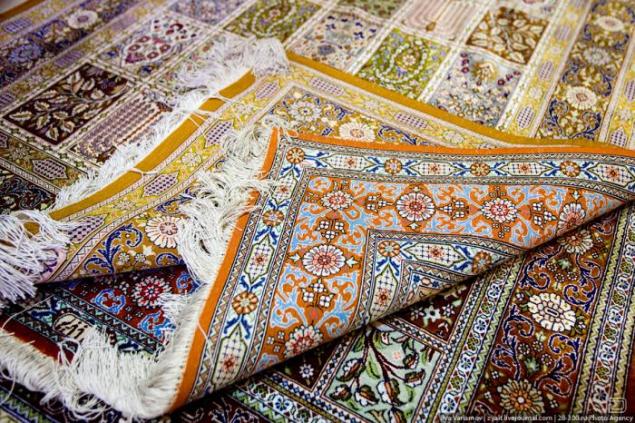
14. And it is cheap Chinese carpet, locals are buying, and cheap and rich! Finally, carpet mafia itself annoying if you show the slightest interest in the carpet, then on you do not fall behind. Shidov and volunteers send immediately.
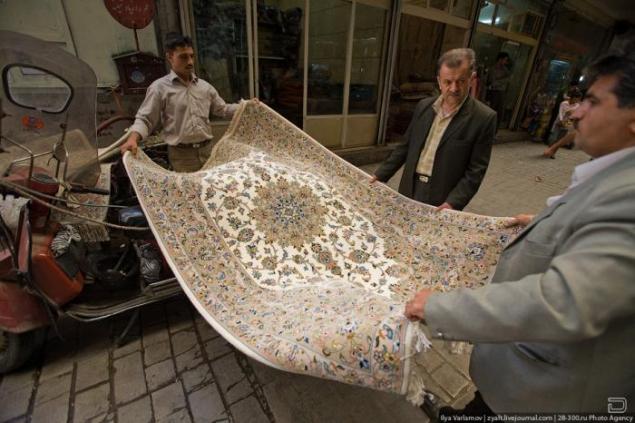
15. We now turn to the museum. In Shiraz, in the former baths, near the market, there is a good carpet museum.
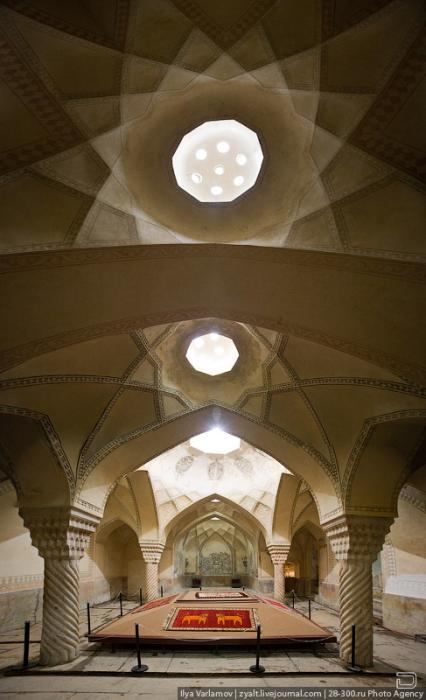
16. Carpet weaving - a long, complex and laborious process. Wool dyed with natural dyes (each province has its own methods of staining). After this operation, the wool is washed in pure water and hung to dry. The dyes obtained from the roots of the madder, shell walnuts, grape leaves, stalks of asparagus, peel pomegranates from cochineal, sour milk. For dyeing and are also used mineral chemicals in combination with caustic soda, citric acid and others. Necessary to fix the paint and prevent it from being washed out and erasing.
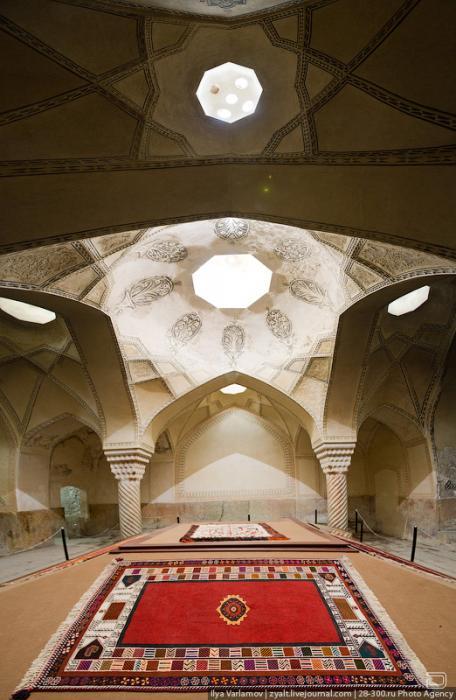
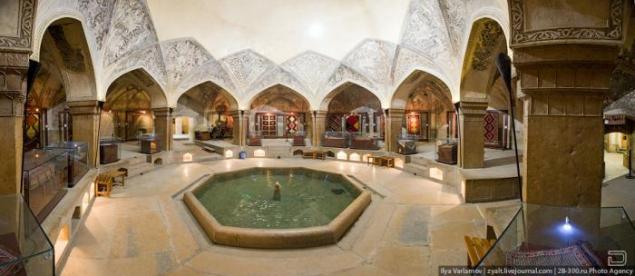
18. What a wonderful carpet, so the market is not found.
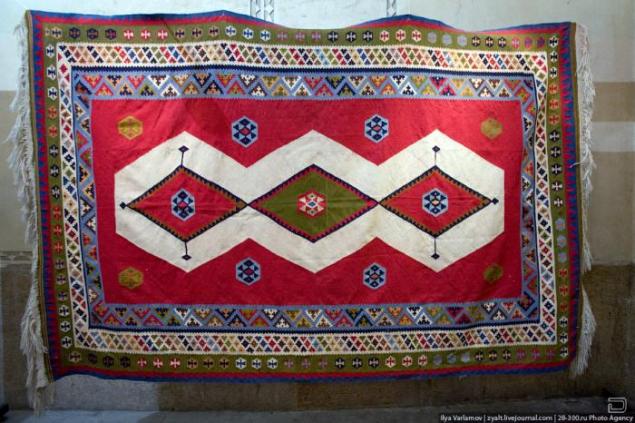
19. Or here! Great job.
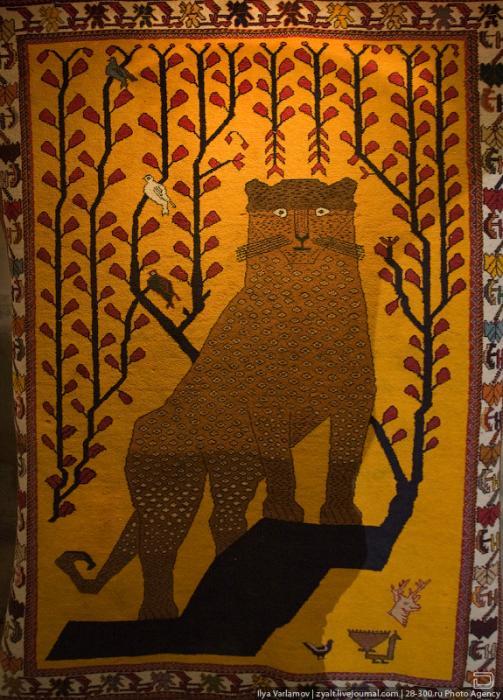
20. Immediately obvious that was not there before computers and the master painted the beast is seen. Now, the maximum that you will be offered a translation computer or incubator lurid stencil patterns.
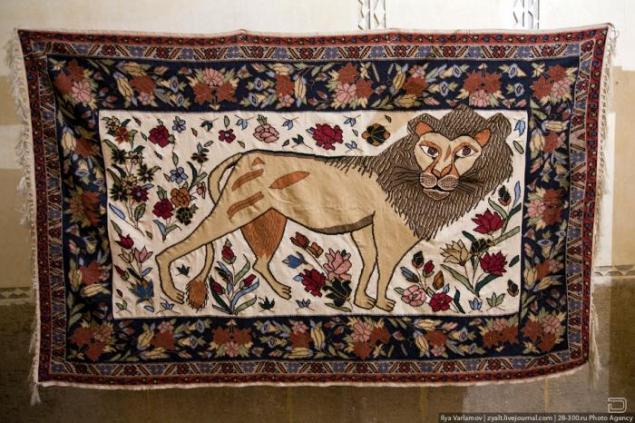
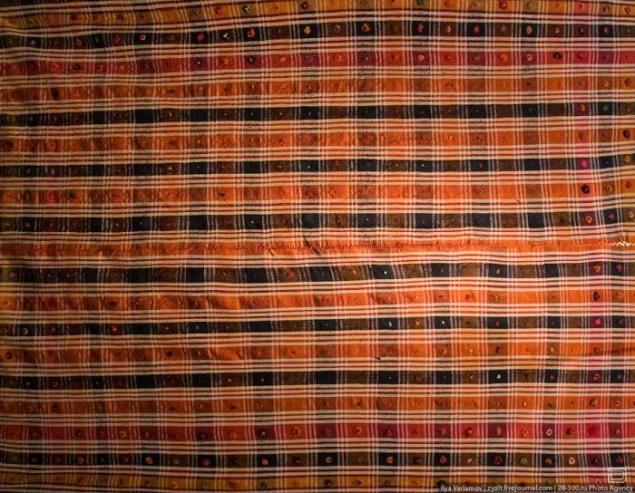
21. How to weave carpets in fact, no one knows, but the tourists show that car. The machine is a wooden frame on which the upper and lower pull crossbar fabric. It consists of longitudinal threads arranged close to each other (the quality of the carpet depend, among others, and on the density and thickness of the yarn). These threads are tied woolen tufts that form the pile of the carpet. When a number of nodes across the width of the carpet completes introduces additional transverse thread (usually cotton) to give the nodes and all product strength and shape. This process is repeated row after row until then, until it has all the pile of the carpet. Then comes the last part of the operation: haircut cloth. It should be shorn over the entire length to the thickness of the volume woolen yarns. Thus, a dense, thick pile. From the density of nodes depends on the clarity of the picture.
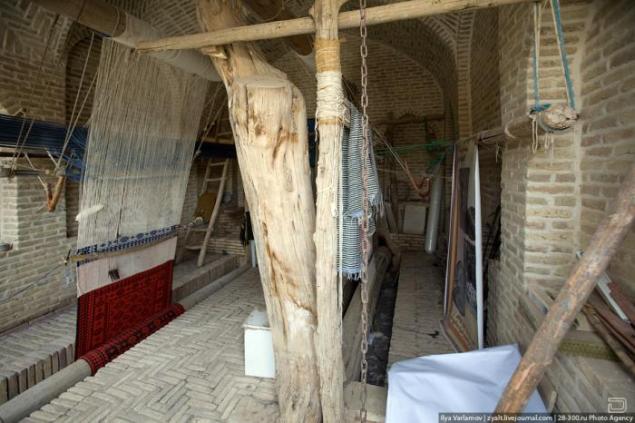
1. The Iranian carpets are almost always sold under the brand name "Persian". Although Persia long gone, everyone knows that the softest cat is "Persian", the most succulent fruit is "Peaches" and the best carpets "Persian".

2. This carpet mafia, the most powerful mafia in Iran. In Iran, due to disputes with the United States is nowhere does not accept credit cards. ANYWHERE, you can not pay your credit card anywhere can not withdraw cash, it is written in all the guidebooks in bold. There is only one place where you can get a cash card with the US - a carpet shop. Carpet Baron, a large percentage will your card transaction through a bank in the UAE, he is happy to take the card to pay expensive carpet.

3. Carpet Baron has long been the production of carpets in any way. He places an order with the poor Iranian peasants who are high up in the mountains for years woven carpets, they he pays 500 to $ 1,000 per koverogod (that is, if the carpet do half a year, the fee is 2 times less), and then sells them 5 times more tourists.

4. If you are logged in to a carpet shop in Esfahan that guidebooks describe as one of the centers of carpet weaving, do not be surprised to discover there is no local production of carpets. Though quirky salesman easily sell you a Chinese rug, like a local.

5. It looks like a typical carpet shop, which lure tourists. If you do decide to buy a carpet, it is best to come to the shop itself, as elsewhere, zamanily or "guide", which led you to the store, get a percentage of your transaction, which, of course, you pay.

6. The cost of the carpet starts at $ 20 on the Chinese synthetics to tens of thousands of dollars for the great Iranian silk carpet. Wool carpets are domestic production of 100 dollars. Good wool rug can be bought for 300-400 and silk for 3000-5000. The best wool carpet is cut from the neck and stomach of a sheep. It is believed that the wool is characterized best quality and shine.

7. Here then try differences Chinese carpet from Iran. If you decide to buy an expensive carpet, it is best to visit to shop and see the range of our stores. Firstly, you will learn a little bit to understand the carpets, and secondly, will be able to decide what you like and do not spend a lot of time in Iran in search.

8. Carpet shops are open every day, even when the rest of the market is closed.

9. Cheap carpets even harvested at night, this is not stealing.

10. Also, the carpets are hand or machine work. Chinese carpets in the main machine knitting, red price it $ 200, of course, does not make sense to carry a carpet from Iran. Shopkeepers repair the goods in the store. Recently in Iran, put into production carpet cleaning, dyeing and spinning machines, beware of imitations! Units should be smooth and orderly arrangement of them. If you look at the seamy side of the carpet handmade pattern and color will be clean. This compares favorably with the carpet carpet machine work, which has blurred the picture.

11. Few mend and will be like new! In Iran, there are two methods of carpet: the Turkish and Persian. Turkish rugs are woven by a needle hook. According to the method of Persian knots tied inside by hand. Carpets made by the Turkish method, firmer texture. It depends on how the knots, which is different from the Persian. In Persian carpet smooth surface inside out thanks to a peculiar way of tying knots.

12. In the carpet shops are often kitsch reigns. If earlier the Persian masters boast stunning ornaments, fine work, now it is 99 per cent identical plots stamping stencil. Then I will show a few carpets from the museum, so you can see how everything is bad. The apogee of bad taste are the carpet pattern. This picture perfectly decorate Gypsy house, living room or office Kadyshevo Moscow officials, the rest have to stay away from them.

13. In the photo 3 silk carpet. The cheapest dark - $ 2,500, then 3,500, and the most expensive yellow 4000. They are characterized by the density and quality of work. In the eyes it is very difficult to identify than the sellers are careless. Therefore, it is always better to compare with similar carpets.

14. And it is cheap Chinese carpet, locals are buying, and cheap and rich! Finally, carpet mafia itself annoying if you show the slightest interest in the carpet, then on you do not fall behind. Shidov and volunteers send immediately.

15. We now turn to the museum. In Shiraz, in the former baths, near the market, there is a good carpet museum.

16. Carpet weaving - a long, complex and laborious process. Wool dyed with natural dyes (each province has its own methods of staining). After this operation, the wool is washed in pure water and hung to dry. The dyes obtained from the roots of the madder, shell walnuts, grape leaves, stalks of asparagus, peel pomegranates from cochineal, sour milk. For dyeing and are also used mineral chemicals in combination with caustic soda, citric acid and others. Necessary to fix the paint and prevent it from being washed out and erasing.


18. What a wonderful carpet, so the market is not found.

19. Or here! Great job.

20. Immediately obvious that was not there before computers and the master painted the beast is seen. Now, the maximum that you will be offered a translation computer or incubator lurid stencil patterns.


21. How to weave carpets in fact, no one knows, but the tourists show that car. The machine is a wooden frame on which the upper and lower pull crossbar fabric. It consists of longitudinal threads arranged close to each other (the quality of the carpet depend, among others, and on the density and thickness of the yarn). These threads are tied woolen tufts that form the pile of the carpet. When a number of nodes across the width of the carpet completes introduces additional transverse thread (usually cotton) to give the nodes and all product strength and shape. This process is repeated row after row until then, until it has all the pile of the carpet. Then comes the last part of the operation: haircut cloth. It should be shorn over the entire length to the thickness of the volume woolen yarns. Thus, a dense, thick pile. From the density of nodes depends on the clarity of the picture.

In Tokyo, opened an international exhibition of robots (11 photos)
Tiered Berlin Station (12 photos)

